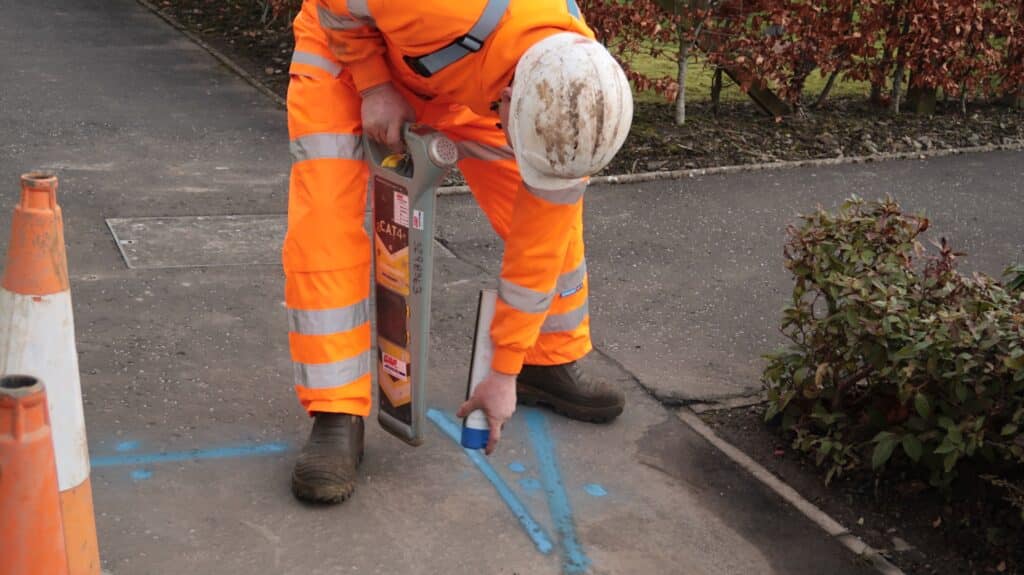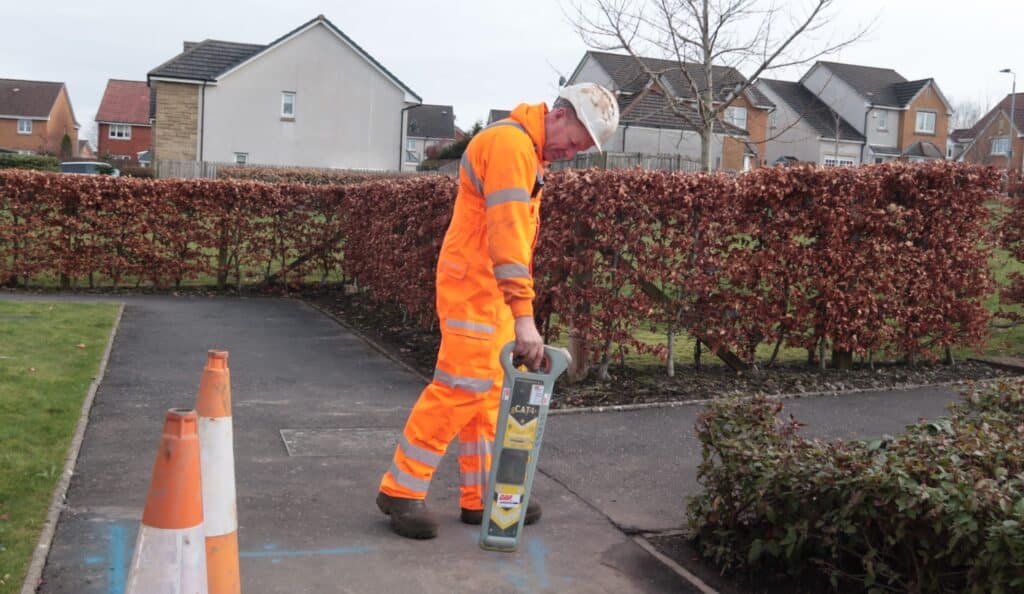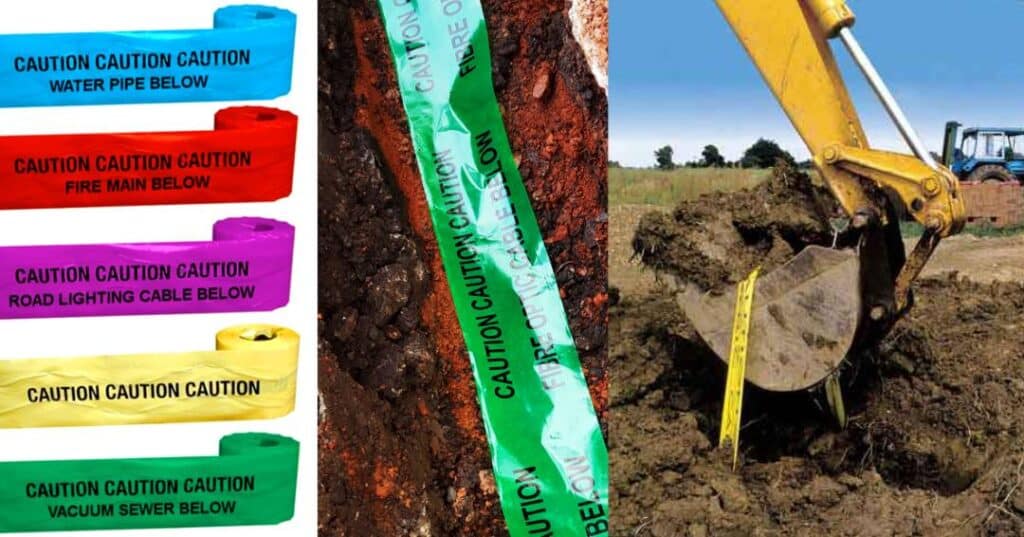Underground Utility Colour Codes Explained
If you’ve ever seen construction work being done, you might have noticed brightly coloured markings on the ground. These markings are not just random graffiti – they are colour codes indicating the location and type of underground utility, they can also specify depth, owner and direction. Knowing these codes is crucial for anyone who needs to dig or excavate in the ground, as it helps to prevent damage to essential infrastructure and avoid accidents.
In the UK, the colour codes for underground utilities are defined by the Health and Safety Executive (HSE). The codes are simple and easy to remember, with each colour representing a specific type of utility. Here is a breakdown of the colours and what they represent:
Red – Electric power lines, conduit and cables.
Orange – Telecommunication, alarm or signal lines.
Yellow – Gas, oil, steam, petroleum, or other flammable material.
Green – Sewage and drain lines.
Blue – Drinking water.
Purple – Reclaimed water, irrigation, and slurry lines.
Pink – Temporary survey markings, unknown/unidentified facilities.
White – Proposed excavation limits or route.

How Do We Detect Underground Utilities?
Utility location methods vary based on the materials used in their construction. Although cable plans provide a general idea of the location and quantity of underground services at a site, it is critical to have a qualified individual use appropriate locating services to trace the cables.
Metal pipes and cables are typically located using electromagnetic equipment with a transmitter and receiver, while plastics and concrete utilities are more commonly located using radio location and ground penetrating radars. Depending on the nature of their content, some utilities are permanently marked using posts and bollards.

What Is Ducting?
The purpose of the ducting system is to provide a safe and secure environment for utilities to be transported underground. The ducting protects the utilities from damage caused by external forces, such as accidental digging, and environmental factors like soil erosion or flooding. It also helps to reduce the likelihood of service interruptions and improve the overall reliability of the utilities.
Underground ducting must be colour coded to comply with safety and building regulations. Whilst ducting protects the utilities inside, it also serves as a warning sign as to what cables you may have come across so that you can act accordingly.
Black – Domestic mains electric cable, low voltage
Red – High voltage electric cables
Yellow – Service and mains gas cable (ducting is perforated to allow for gas venting)
Blue – Water pipes
Green – Broadband, telephone and non-motorway CCTV cables
Grey – BT or telecommunications cables
Purple – Motorway service cables for speed cameras, traffic cameras, emergency phones etc
Orange – Street lighting and traffic signalling cables
There are minimum depth requirements for all underground utility ducting. Gas pipes are typically buried at a minimum depth of 600mm to reduce the risk of damage caused by accidental digging or excavation. Similarly, electric cables are often buried at a minimum depth of 450mm to protect them from accidental contact.
As well as safety, functionality is another reason for different depths, for example, water pipes need to be buried deep enough to avoid freezing during winter months.
Specific depth requirements may vary slightly depending on the cable load and ground type that you’re laying in. You can see more detailed guidelines for the position and colour of underground utilities from The National Joint Utilities Group here.

What Is Marker Warning Tape?
To help identify the location of utilities within the ducting system, warning tapes are often placed above the ducting. These tapes assist early detection of underground ducting and workers can avoid damaging important utilities and stay safe while digging.
Detectable safety tape has an aluminium backing that can be detected by a non-ferrous metal detector. Non-detectable tapes don’t have this feature, but they provide a visual indication that utilities are buried below.
By using warning tape, workers can avoid damaging important utilities and stay safe while digging.

How Can We Help?
Connections2energy manages utility connections for domestic, industrial, and commercial schemes. We facilitate your utility requirements and bridge the gap between dealing with separate utility providers.
Coordinating multiple connection providers can be time-consuming and challenging. Fortunately, our team of experts can handle that importance on your behalf. Our vast range of capabilities covers all utility sectors, allowing us to deliver our clients a complete and comprehensive utility infrastructure solution, from conception to completion. You can view all our services here.
